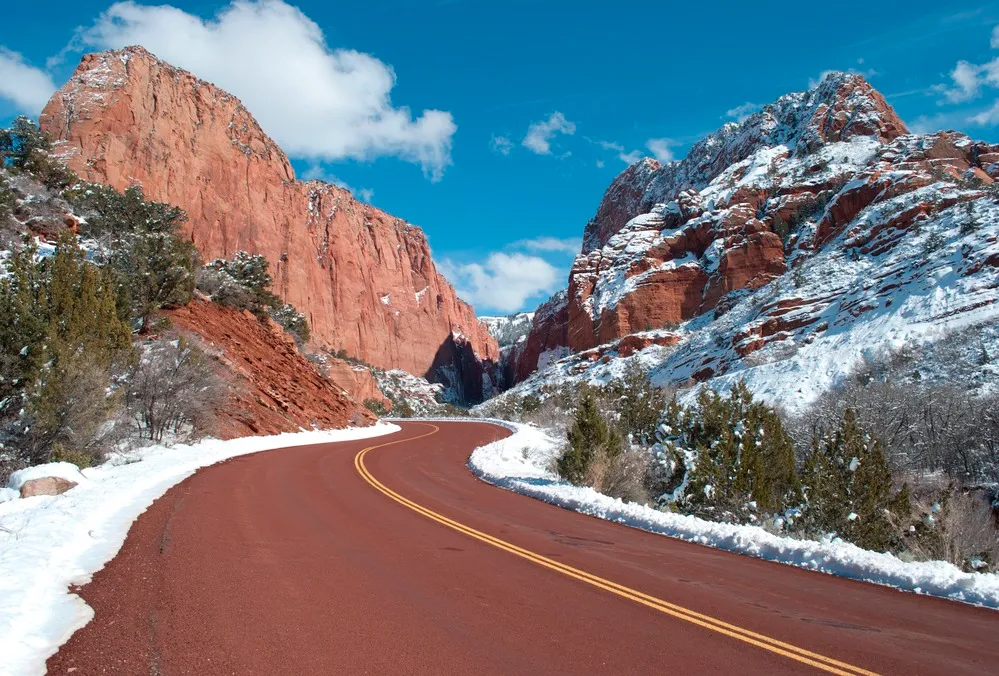Planning a trip to southern Utah's iconic landscape starts with understanding how to access it. With multiple entryways, each Zion National Park entrance offers a unique path into this geological wonderland. At The National Park Shops, we’re passionate about helping visitors make informed decisions by sharing practical travel guidance and firsthand experience. In this guide, you'll learn everything you need to know about each Zion National Park entrance, so you can choose the best route based on your location, interests, and adventure goals.
How many entrances are there to Zion?
When planning your visit to the breathtaking landscapes of southern Utah, it's important to understand the different Zion National Park entrance options available. Each entrance serves a unique purpose and leads to distinct areas of the park, so your entry point can shape your entire experience. Instead of defaulting to the main gate, choosing the right Zion National Park entrance will help you maximize your time and see more of what you're most interested in.
Here are the four primary entrances:
-
South Entrance (Springdale): Best for first-time visitors who want direct access to Zion Canyon and major hikes.
-
East Entrance (via Highway 9): Ideal for travelers coming from Bryce Canyon or Page, with a scenic tunnel and elevated viewpoints.
-
Kolob Canyons Entrance (off I-15 near Cedar City): Great for those seeking solitude and dramatic canyon views.
-
Kolob Terrace Road (starting in Virgin): A remote, less-developed access point leading to high-elevation backcountry trails.
Each Zion National Park entrance connects to well-maintained roads and offers access to different trailheads, viewpoints, and experiences. Whether you're road-tripping through southern Utah or planning a specific hike, understanding your options will make it easier to book nearby lodging, time your arrival, and avoid unnecessary backtracking.
The Main Entrance - The South Entrance
The South Entrance is by far the most popular Zion National Park entrance, located just outside the town of Springdale, Utah. This gateway leads you directly into Zion Canyon, home to many of the park's iconic hikes like Angels Landing and The Narrows. If you're looking for convenient access to shuttle services, visitor centers, and a range of lodging options, this Zion National Park entrance is the ideal choice. It's open year-round and serves as the primary arrival point for most travelers. As such, expect higher traffic and longer wait times during peak seasons.
One key advantage of this Zion National Park entrance is its direct connection to the Zion Canyon Scenic Drive, which is only accessible by shuttle for most of the year. Because it’s centrally located, the South Entrance is also the best option if you're visiting Zion as part of a road trip through Utah’s Mighty 5. You'll find the main visitor center here, offering maps, trail updates, and ranger-led programs. For many, this is the most efficient Zion National Park entrance due to the concentration of services and trails nearby. It’s highly recommended for first-time visitors aiming to explore the heart of the park.
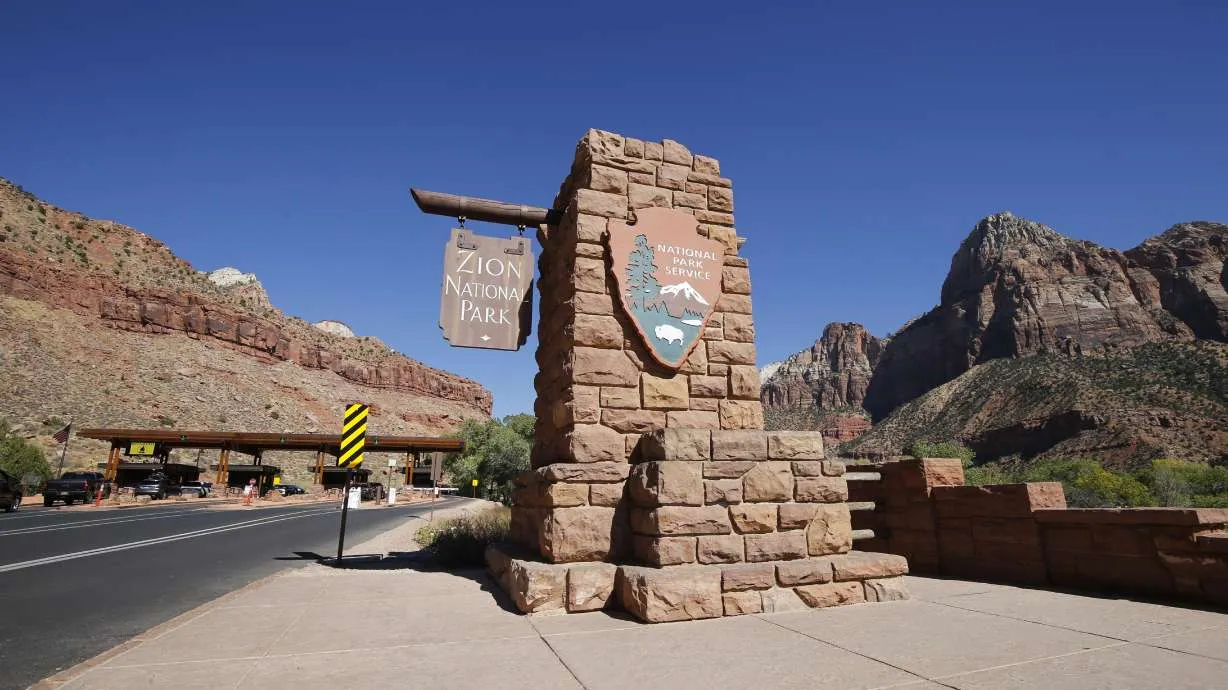
The Tunnel Entrance - The East Entrance
The East Entrance of Zion National Park is accessed via Utah’s Highway 9 and is known for its dramatic approach through the Zion-Mount Carmel Tunnel. This Zion National Park entrance is ideal for travelers coming from Bryce Canyon, Grand Staircase-Escalante, or Lake Powell. It offers a scenic route that winds through towering cliffs, hoodoos, and switchbacks, providing stunning photo opportunities even before you reach the visitor areas. If you’re entering from this direction, be aware of tunnel restrictions for large vehicles, which may require an escort.
This Zion National Park entrance gives you quick access to trailheads like Canyon Overlook and is less crowded than the South Entrance. It also offers a different geological view of the park, with elevated plateaus and open vistas. Since shuttle service is not available on this side, you'll need to plan your parking and trail access accordingly. Still, the East Zion National Park entrance is perfect for those who prefer a quieter entry with breathtaking vistas. It's a popular choice for photographers and early risers aiming to catch the sunrise.
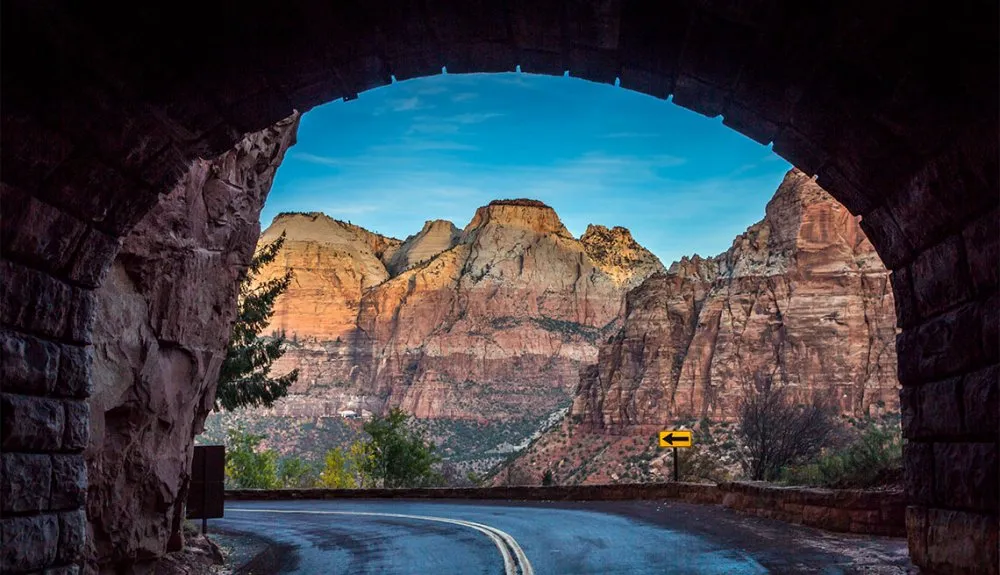
The Highway Entrance - Kolob Canyons
For those seeking a more serene and less-traveled experience, the Kolob Canyons Zion National Park entrance is a hidden gem located off Interstate 15 near Cedar City. This entrance brings you into the northwest section of the park and is often overlooked by the majority of visitors. However, it features stunning red rock canyons and excellent hiking opportunities like the Taylor Creek Trail and Timber Creek Overlook. This Zion National Park entrance is open year-round and includes its own visitor center with maps and restrooms.
Because Kolob Canyons is disconnected from Zion Canyon, this Zion National Park entrance is ideal for travelers who have already explored the main areas and want something new. It’s also a great choice if you're entering from northern Utah or Nevada. The scenic drive here is less crowded, making it perfect for a leisurely afternoon or a peaceful picnic. If you value solitude and unspoiled scenery, the Kolob Canyons Zion National Park entrance offers a rewarding alternative. It's best suited for repeat visitors or those staying closer to Cedar City.
>> Read More: 13 Zion National Park Caves: Must-Visit Spots
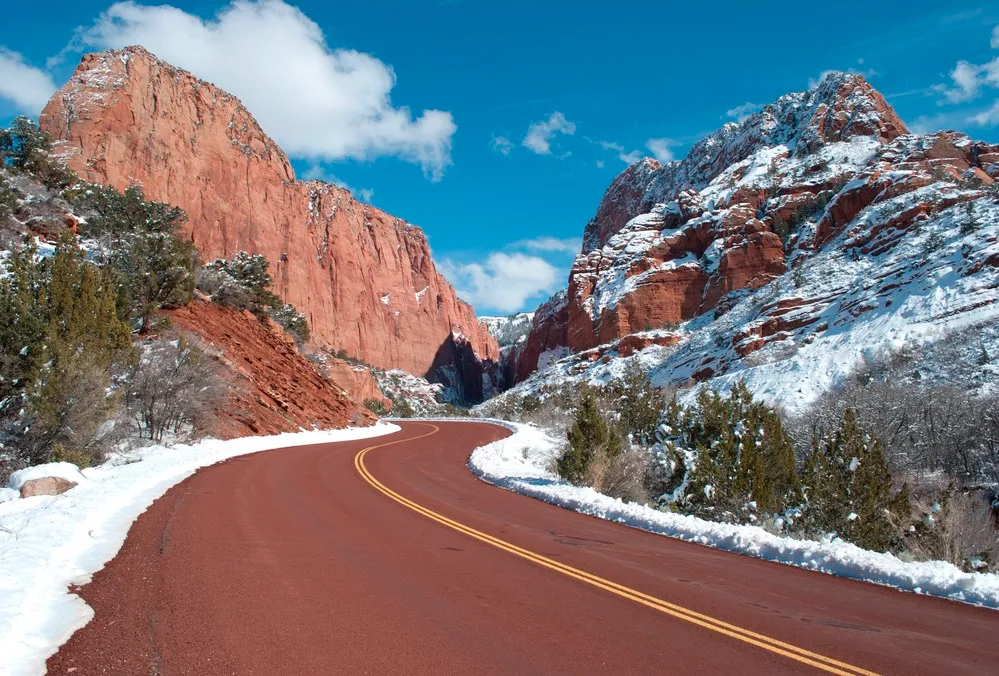
The “Non-Entrance” - Kolob Terrace
Unlike other access points, Kolob Terrace Road doesn’t have a formal Zion National Park entrance with a fee station or ranger post. Still, it offers an exceptional way to reach remote areas of the park and is popular among locals and experienced hikers. This Zion National Park entrance alternative begins in Virgin, Utah, and climbs steadily into the high country, eventually reaching Lava Point, the highest viewpoint in the park. It’s best known for its access to the West Rim Trail and for connecting to backcountry routes.
Because it lacks amenities and official gate services, Kolob Terrace is often referred to as the “non-entrance” Zion National Park entrance. It’s perfect for those who want to avoid crowds and explore less-developed areas. Note that this route can be impassable in winter due to snow, so always check conditions in advance. The scenery along the drive is spectacular, with sweeping mountain vistas and forested plateaus. This Zion National Park entrance is ideal for backpackers, wilderness enthusiasts, and those looking to experience Zion in a more secluded way.
>> Read More: 16 Best Things to Do in Zion National Park: Unique Experiences
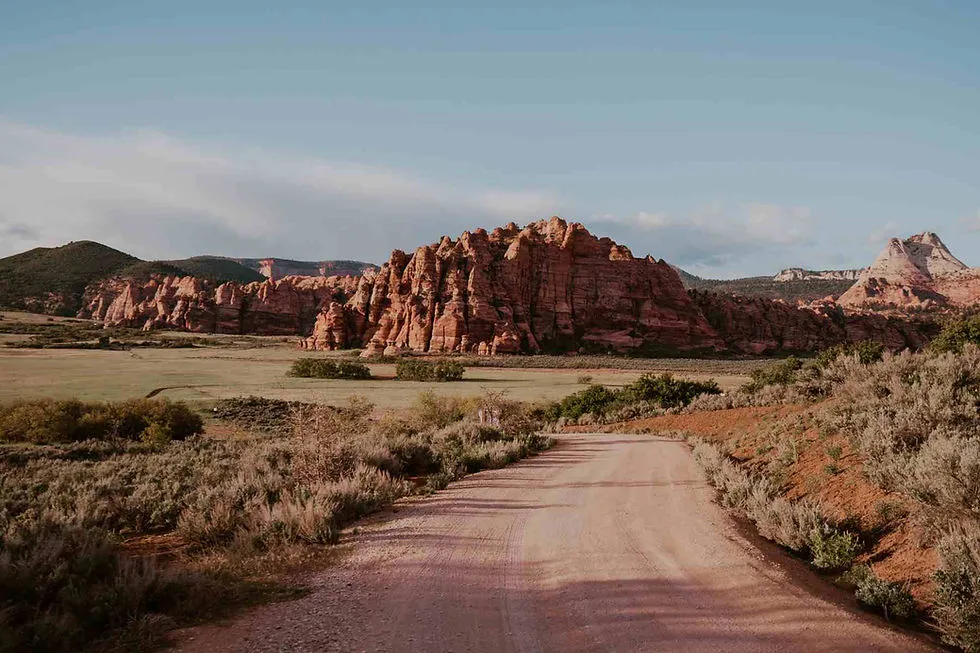
How to get to the Zion National Park Entrance?
Getting to the right Zion National Park entrance is all about your starting point and what you want to experience in the park. Here’s a quick breakdown to help you decide:
-
South Entrance (Springdale): Most popular and accessible from Las Vegas or southern California via I-15 and UT-9.
-
East Entrance (Mount Carmel Junction): Ideal for visitors coming from Page, Arizona or Bryce Canyon via UT-9.
-
Kolob Canyons Entrance: Found off I-15 at Exit 40, about 40 miles north of the main canyon, perfect for travelers from Cedar City or northern Utah.
-
Kolob Terrace Road: A scenic backroad starting in Virgin, Utah, great for remote hiking and backcountry access.
Each Zion National Park entrance is well-marked and GPS-friendly, but the landscapes and amenities vary greatly. Plan based on what trails and views you want to prioritize. Many experienced travelers recommend entering through one gate and exiting another to maximize your exposure to Zion’s diverse scenery. Always check ahead for any road closures or seasonal weather impacts that could affect your route.
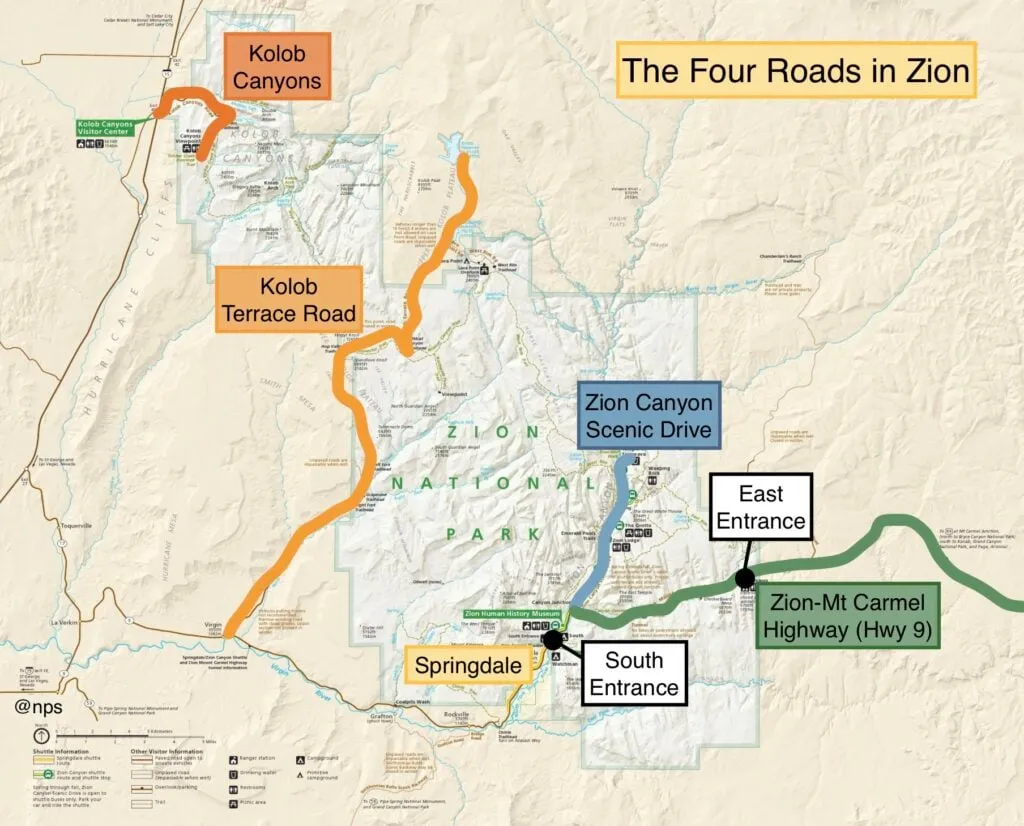
What else do I need to Know?
Zion National Park is truly one of the most breathtaking destinations in the U.S., and every section of the park offers something unique and awe-inspiring. Whether you're entering from the south, east, or Kolob Canyons area, there's no wrong choice, but a little preparation can make your experience safer and far more enjoyable.
Here are a few practical tips based on firsthand experience:
-
Pack plenty of water and energizing snacks. Zion can get extremely hot, especially during the Zion summer, and many of the hikes are physically demanding. Staying hydrated and fueled is key to enjoying your time on the trails.
-
Always check the weather, especially if you're planning to hike The Narrows. Flash floods are a real danger and can occur quickly, never enter slot canyons or the Virgin River if rain is in the forecast.
-
Visit the official Zion National Park website before your trip. Look for trail or road closures, shuttle schedule updates, and health advisories, including any alerts about harmful bacteria in the Virgin River. Follow all posted safety guidelines.
-
Know the trails before you go. Research hike lengths, elevation gain, and required permits, so you’re not caught off guard. Planning ahead helps you avoid overexertion and disappointment.
-
Arrive early. Getting to the park early in the morning not only helps you beat the heat but also lets you enjoy popular trails before the crowds arrive.
-
Have a clear plan. Decide in advance which trails are at the top of your list and tackle those first, especially iconic routes like Angels Landing or The Narrows.
-
Expect crowds and be patient. Zion is a beloved park for good reason, so bring a positive attitude and flexibility, especially during peak season.
-
Above all, take time to soak in the views. From towering sandstone cliffs to narrow canyons and lush riversides, Zion offers unforgettable scenery at every turn.
If it’s your first time visiting Zion National Park, entering through the south entrance is highly recommended. It gives you direct access to the main visitor center, the shuttle system, and the heart of Zion Canyon, home to the park’s most famous trails. For returning visitors, consider exploring lesser-known areas like Kolob Canyons or the East Rim. Zion is a park worth savoring, and every corner offers something new to discover.
Conclusion
Understanding each Zion National Park entrance can significantly enhance your visit by aligning your route with your interests and travel plans. Knowing which Zion National Park entrance connects to which trails and scenic routes gives you more freedom to explore efficiently. Don't forget to check seasonal conditions, shuttle schedules, and road alerts before you go.
With thoughtful planning and the right information, navigating each Zion National Park entrance becomes part of the adventure itself. From dramatic canyon views to hidden alpine meadows, the right entrance opens up the experience you’re looking for. And with guidance from trusted sources like The National Park Shops, you can prepare with confidence. So the next time someone asks you where to find the best Zion National Park entrance, you’ll know exactly what to say.
>> Read More:

